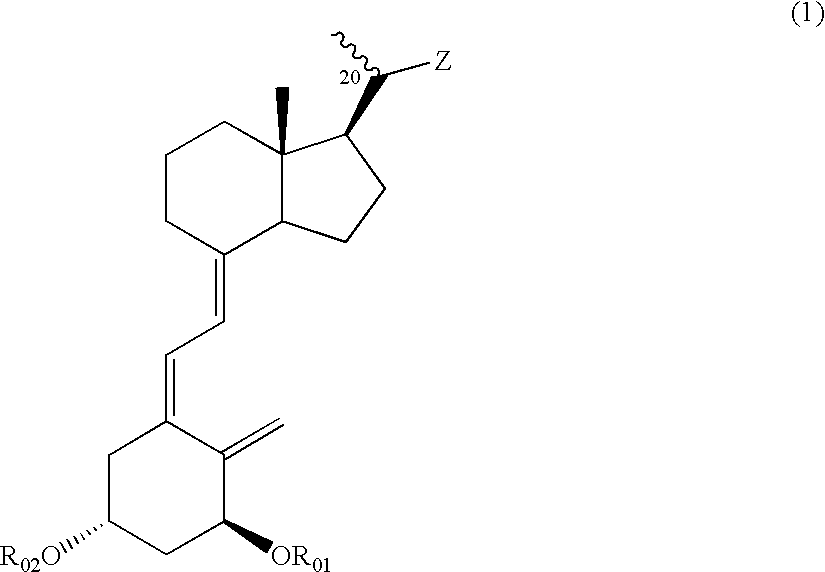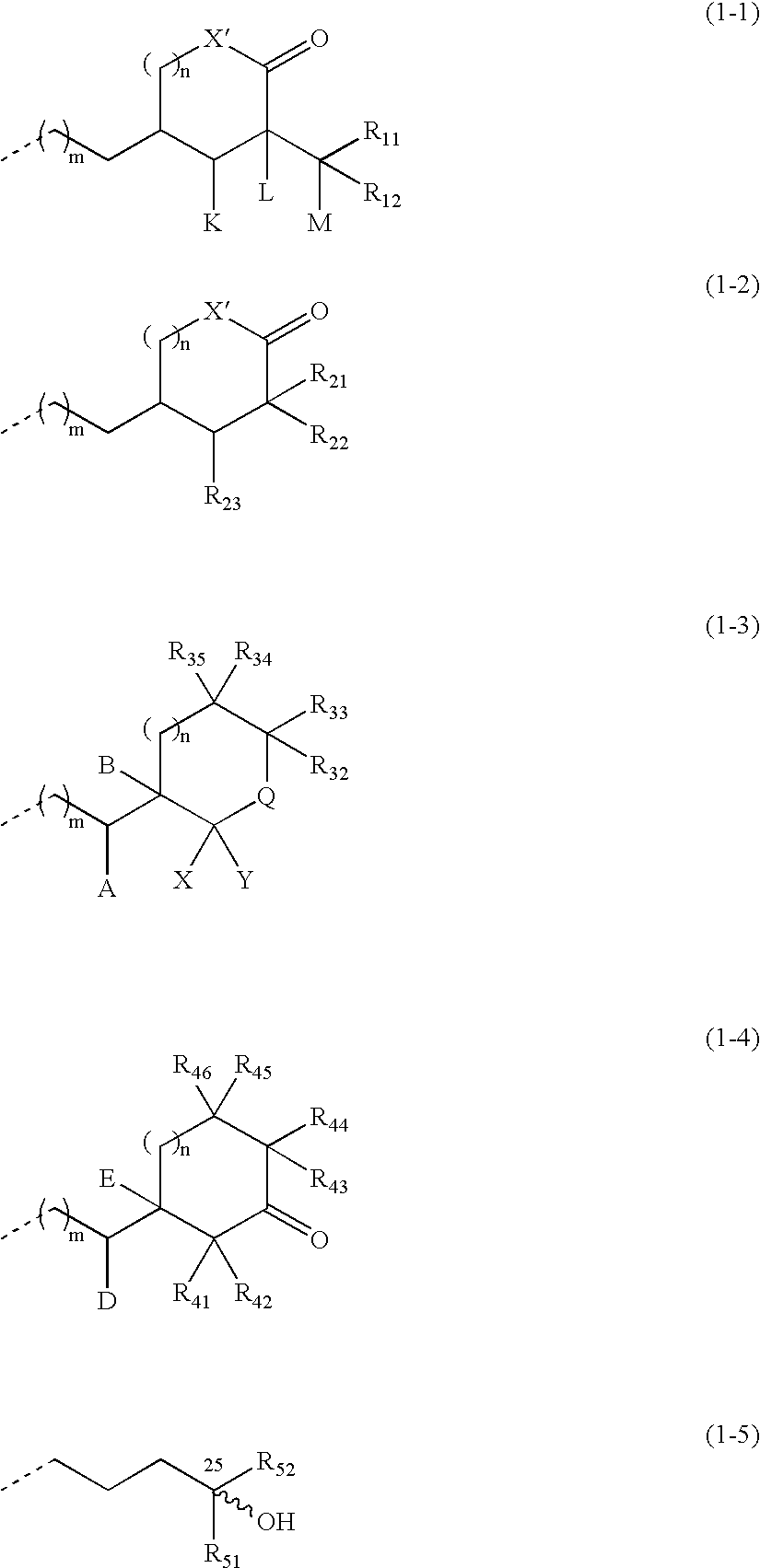Vitamin D3 derivative and treating agent for inflammatory respiratory disease using same
a technology of inflammatory respiratory disease and derivatives, applied in the field of vitamin d3 derivatives, can solve the problems of epithelium damage, current treatment, and inability to meet the needs of patients, and achieve the effect of suppressing the infiltration of neutrophils
- Summary
- Abstract
- Description
- Claims
- Application Information
AI Technical Summary
Benefits of technology
Problems solved by technology
Method used
Image
Examples
reference example 1
[0178]Production of Compound (6) (m=0; Y=Br)
[0179](1) The (R-1) (10.0 g, 47.1 mmol), which can be obtained from vitamin D2 through a known process (for example, J. Org. Chem., 51, 1264-1269 (1986)), was dissolved in dry pyridine (30 ml), p-toluenesulfonyl chloride (10.8 g, 56.5 mmol) was added, and the mixture was stirred for 2.5 hr at room temperature. The reaction mixture was extracted three times with ethyl acetate after the addition of 2N hydrochloric acid (200 ml). The combined organic layers were washed with a saturated sodium bicarbonate aqueous solution and with brine, dried over anhydrous sodium sulfate and concentrated to obtain a crude product of (R-2).
[0180](2) The above-obtained crude product of (R-2) was dissolved in DMF (60 ml), potassium cyanide (15.3 g, 235.5 mmol) and 18-crown-6 (1.24 g, 4.7 mmol) were added, and the mixture was stirred overnight at 100° C. The reaction mixture was extracted twice with ethyl acetate after the addition of water. The combined organi...
reference example 2
[0185]Production of Compound (6) (m=1, Y=Br)
[0186](1) The (R-1) (10.05 g), which can be obtained from vitamin D2 through a known process (for example, J. Org. Chem., 51, 1264-1269 (1986)), was dissolved in pyridine (80 ml), and the solution was cooled to 0° C. Trimethylcacetyl chloride (6.1 ml) was added, and the mixture was stirred for 1 hr. Subsequently, trimethylsilyl chloride (6.6 ml) was added, and the mixture was stirred further 1 hr. The reaction mixture was poured into ice-water and extracted with ether. The combined organic layers were washed successively with a saturated potassium hydrogensulfate solution, water and brine, dried over anhydrous sodium sulfate and concentrated to obtain a crude product of (R-6).
[0187](2) An ether solution of the above-obtained (R-6) was added dropwise to a suspension of potassium t-butoxide (21.2 g) and water (2 ml) in ether (270 ml) at 0° C. The mixture was warmed up to room temperature and stirred overnight. The reaction mixture was poure...
reference example 3
[0201]Production of Compounds (R-17) and (R-18) (an example of Compound (8) (m=0; n=1))
[0202](1) The (R-1) (3 g), which can be obtained from vitamin D2 through a known process (J. Org. Chem., 51, 1264-1269 (1986)), was dissolved in pyridine (15 ml), to the solution was added p-toluenesulfonyl chloride (3.2 g) at room temperature, and the mixture was stirred for 2 hr. Chlorotrimethylsilane was added dropwise at room temperature in a nitrogen atmosphere, and the mixture was stirred further for 20 min. The reaction mixture was extracted with ethyl acetate after the addition of a saturated sodium bicarbonate aqueous solution. The combined organic layers were washed with brine and concentrated. The residue was dissolved in acetone (30 ml), sodium iodide (2.5 g) was added, and the mixture was heated and refluxed for 5 hr. The reaction mixture was cooled to room temperature, and extracted with ethyl acetate after the addition of a saturated sodium thiosulfate aqueous solution. The combine...
PUM
 Login to View More
Login to View More Abstract
Description
Claims
Application Information
 Login to View More
Login to View More - R&D
- Intellectual Property
- Life Sciences
- Materials
- Tech Scout
- Unparalleled Data Quality
- Higher Quality Content
- 60% Fewer Hallucinations
Browse by: Latest US Patents, China's latest patents, Technical Efficacy Thesaurus, Application Domain, Technology Topic, Popular Technical Reports.
© 2025 PatSnap. All rights reserved.Legal|Privacy policy|Modern Slavery Act Transparency Statement|Sitemap|About US| Contact US: help@patsnap.com



